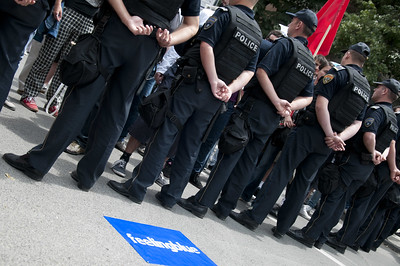At the most recent Board Meeting, the Trustees received a presentation on the Police Academy. Presumably, the Administration made the presentation considering the ongoing civil unrest regarding police brutality. WCC’s police academy is responsible for training prospective officers in this area.
Trustee Angela Davis asked the following question of AVP Brandon Tucker.
Angela Davis: Chair? Um, females. Are there any -um – more females as candidates, or are they actively being recruited? I mean, what sort of the gender dynamics is that in – with the – uh – police academy?Brandon Tucker: Um, so we have increased the number of females and I think that’s largely a part to Joyce’s leadership, as well as the diverse pool of students has also increased. And I think that largely amounts to us really partnering with agencies. Uh, and it’s a struggle. Agencies will tell you – they’ve said it for years – it continues to be an issue today of having diverse – not only in – in gender, but also in race. Um, but we have had over the last couple of years some of the most diverse – um – academies that we’ve seen in years. I think its in large part to our staff, to our faculty there that are teaching that are also encouraging people to come
AVP Tucker didn’t offer any numbers in response to Trustee Davis’ question, so I looked them up, using data the College reports to the State of Michigan.
WCC Academy graduates by gender
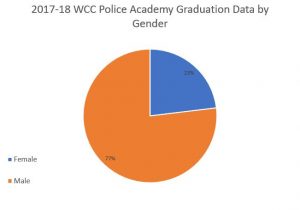
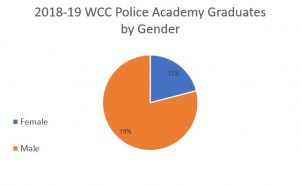
The graphs show that in 2018, WCC reported that 23% of its Academy graduates were female. In 2019, 21% of its Academy graduates were female. Numerically, in 2017-18, WCC’s Police Academy graduated 12 female candidates out of 52. In 2018-19, it graduated 13 female candidates out of 62. While the Police Academy did graduate one more candidate in 2019 than the year before, the class size in 2019 was 19% larger. So, the percentage of female candidates dropped relative to the total class size between 2018 and 2019.
Police Academy graduates by race
Trustee DeVarti asked for a breakdown of the incoming class by gender and race. While the State does not have data on the incoming class, it does have racial/ethnic data on the previous two classes.
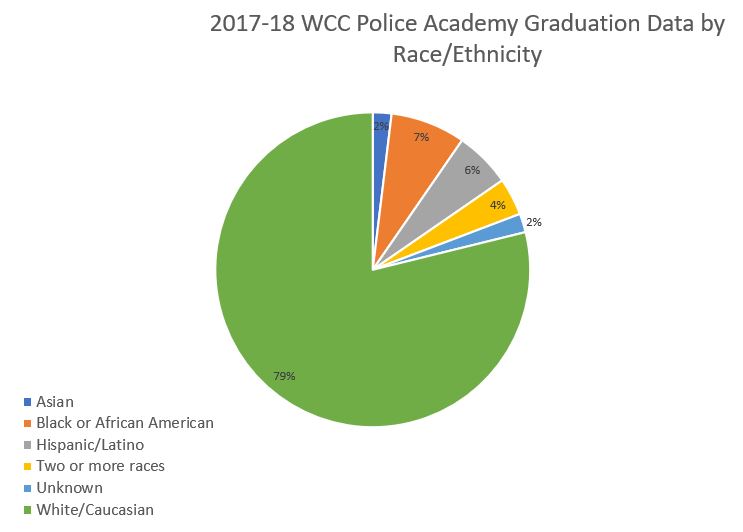
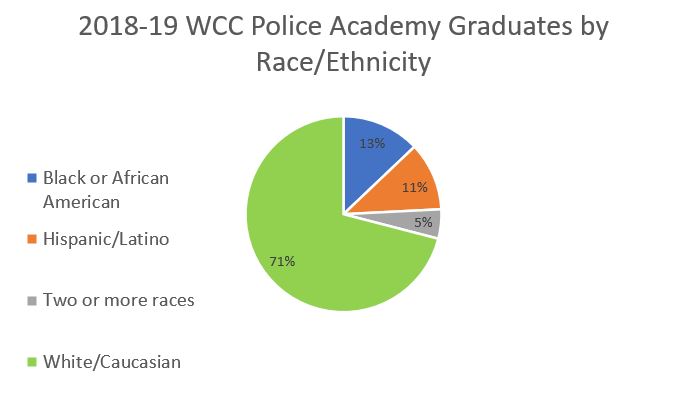
The graphs show that 79% of the 2017-18 Police Academy class was white. 2% of the class identified as Asian; 7% identified as African American; 6% identified as Hispanic; 4% identified as multi-racial and 2% did not indicate their race.
In the 2018-19 class, 71% of the graduating class was white. 13% identified as African American; 11% identified as Hispanic and 5% identified as multi-racial. As with gender, the percentages don’t tell the whole story. In 2017-18, WCC graduated 41 candidates who identified as white. In 2019, the percentage of white officer candidates dropped, but the number did not. Of the 62 graduating candidates, 44 were white.
There’s nothing inherently suspicious about the gender or racial makeup of the WCC Police Academy classes. And WCC isn’t entirely responsible for who enters the Academy class. Some police agencies “sponsor” pre-selected candidates, whom they identified presumably using their own selection criteria.
But the Police Academy’s classes should probably more closely reflect the diversity of Washtenaw County. Currently, Washtenaw County is 74% white; 12.7% African American; 7.9% Asian; 4% Hispanic or Latino; 3.4% multi-racial; 0.3% Native American, and 1.2% unknown/other. 50.5% of Washtenaw County is female. We won’t achieve “community policing” when the Police Academy classes don’t reflect the community.
Photo Credit: Mite Kuzevski , via Flickr
